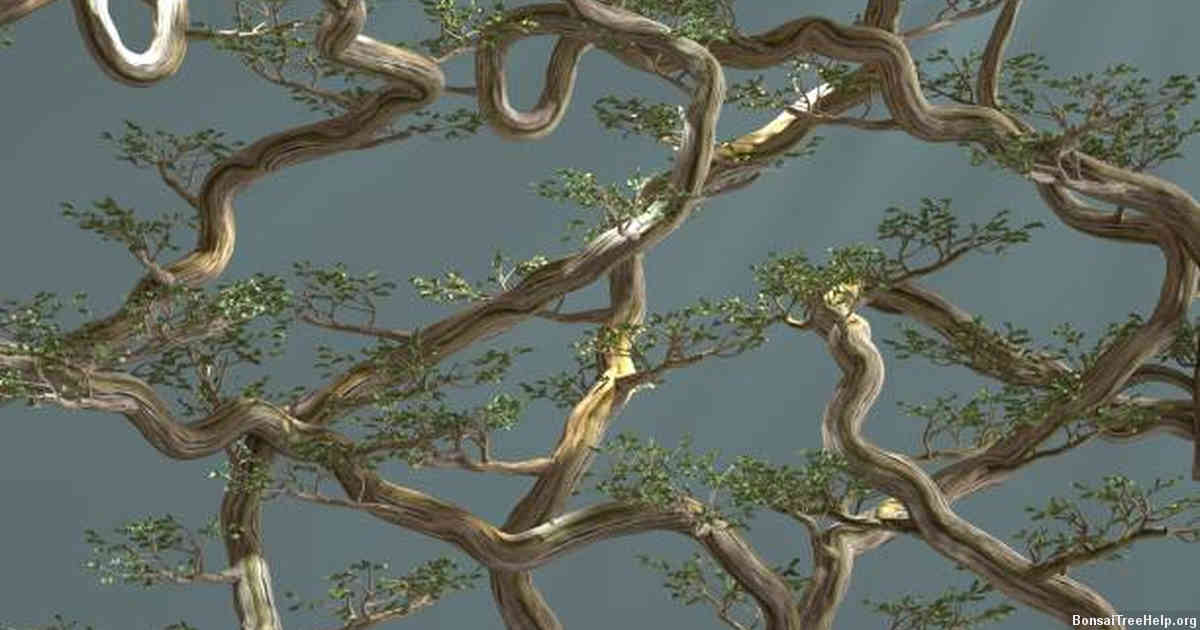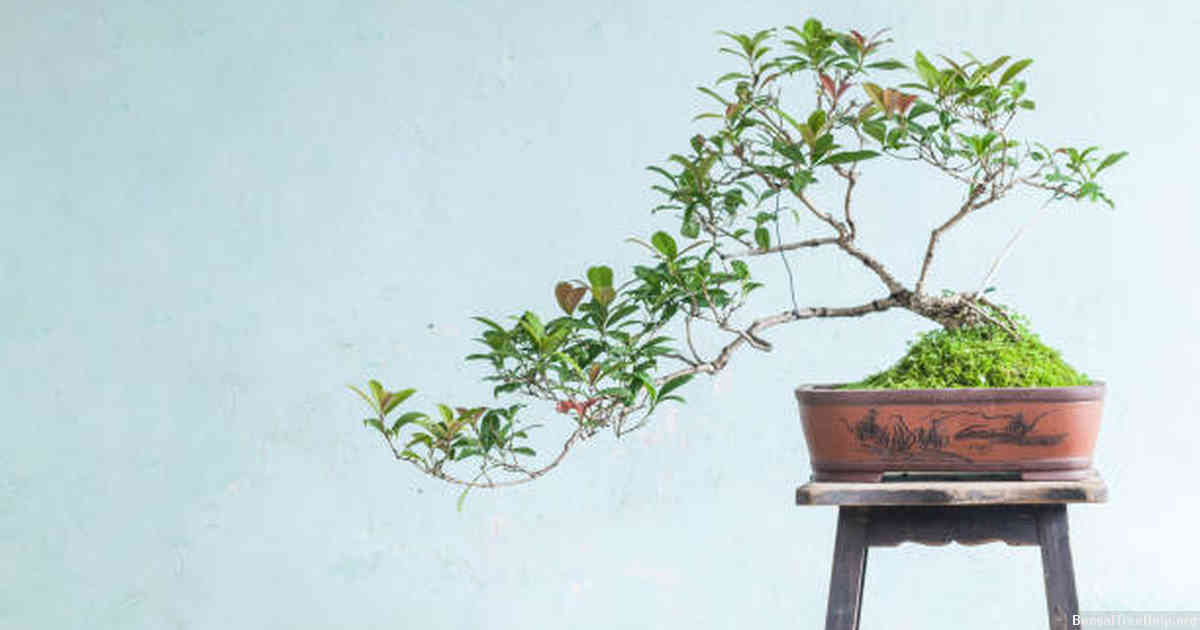
There is no definitive answer to the question of how many fake bonsai trees exist. However, industry estimates put the number at anywhere between 10 million and 100 million worldwide. As artificial plants, bonsai trees are particularly popular due to their low cost and the fact that they require very little maintenance or special care. Fake bonsai trees can be found in a variety of sizes and designs, making them highly accessible for nearly any setting or budget.
Contents:
The Popularity of Bonsai trees

In recent years, bonsai trees have grown in popularity due to their small stature and ornamental value. They often serve as decorations in spaces that don’t have a lot of space or provide an interesting contrast against larger plants. As the art of growing bonsai trees has expanded, so too has the availability of fake bonsai trees on the market.
Fake bonsai trees are created from materials such as plastic and paper mache and designed to look like miniature versions of real ones. Some can even be made to replicate certain varieties of bonsai such as junipers or oaks, with incredible detail right down to the tiny leaves and branches. While they may not be as authentic looking as genuine bonsais, many people purchase them because they require less maintenance and come at a much lower price point than living specimens.
Despite their lack of authenticity, fake bonsais still hold great appeal for many individuals; they often serve as fantastic centerpieces for tables or shelves without taking up much space. Their low cost makes them perfect gifts that do not need to break your budget; since there are no worries about them dying or needing special care, you can just enjoy their beauty without any worry.
The Art of Making Bonsai Trees

Bonsai trees have been a beloved art for centuries, with artists carefully crafting and nurturing miniature versions of nature’s beauty. The practice requires skill, patience, and precision that come together to create intricate works of art. To make a bonsai tree, the artist must start with a sapling or immature tree. Then they need to prune off any branches that are unneeded so as not to overcrowd the tree when it is miniaturized. Alongside this process comes wiring which helps define the shape of each branch in order to encourage desired growth.
The same care and attention is applied when making fake bonsai trees. Every fake bonsai needs to take on its own unique form as though it has grown over time into its particular design rather than simply being carved out of plastic or metal material. Fake bonsais can be made from various materials such as wire mesh or polymer clay depending upon what best suits the desired design effect by the creator. There is much detail work required including detailed painting techniques in order to give life-like look and coloring of leaves and buds that would be expected on an authentic live plant version.
Designers then add finishing touches such as moss or ground cover around the base potting soil along with faux flowers planted around its perimeter in order to complete the whole effect based on their vision for bringing life-like features into a miniature world without taking away from realistic bonsais found in nature itself. These replicas are becoming increasingly popular especially amongst those who do not want extra maintenance or growing responsibility but still want to experience elements associated with owning live plants while decorating their living space at home with something beautiful from nature’s own toolbox.
Types of Bonsai Trees to Choose From

When it comes to selecting a bonsai tree, there are plenty of options from which to choose. The most popular type of bonsai tree is the Japanese maple, which has intricate foliage and stunning colors in the fall. If you prefer something smaller, or simply want an easier-to-maintain option, then dwarf pomegranate is a great choice with its bold pink flowers and vibrant green leaves. Junipers come in many varieties and add aesthetic beauty to your living space thanks to their lush foliage. For those looking for a larger bonsai specimen, Chinese elm is ideal as it can reach up to eight feet tall if well cared for over time.
Ficus trees offer unusual textures like aerial roots and lots of growth potential while pine trees are perfect for those who love styling more natural looking shapes and contours. Flowering cherry trees bring color into play with soft pink hues making them wonderful specimens when blooming during springtime months. Azaleas offer several colors ranging from white to red that look incredible when arranged tastefully in any home or garden setting. For the true connoisseur who wants something different than just another traditional variety, grafted juniper is arguably one of the most exotic bonsais out there boasting both low maintenance requirements along with high style.
Factors Affecting the Quality of Bonsai Trees

The quality of a bonsai tree can vary greatly depending on the environment and conditions it is subjected to. Poor maintenance and incorrect handling can result in poor growth, disease, or even death for the small trees. The type of soil used is essential to its success; the wrong soil will prevent the root system from developing strong roots, which are critical for any healthy plant. Careful pruning is also necessary as this allows for adequate sunlight and airflow to reach all parts of the plant. Quality tools should be used when trimming or wiring so that damage does not occur during these processes.
Temperature levels must also be carefully regulated if real bonsai trees are to thrive, as they are very sensitive to changes in climate that could affect their growing season. Humidity should also be considered; too high humidity can lead to mold or mildew buildup which will then cause infections and other issues with your bonsai tree’s health. When natural light isn’t available, artificial lighting options such as LED lights may be needed in order to ensure sufficient photosynthesis takes place in order for plants to grow properly and remain healthy over time.
Pests such as mealybugs and scale insects must be monitored regularly since these critters love munching on bonsai leaves and stems. This not only affects quality but can also present further long-term risks due to viruses spread by them resulting in stunted growth or deformities for your beloved miniature tree(s). Keeping a consistent eye out for potential pest problems along with taking preventive measures like using neem oil sprays when needed can help ward off infestations before they start wreaking havoc on your treasured plants.
Recognizing a Fake Bonsai Tree

Knowing how to spot a fake bonsai tree is critical in order to protect yourself from getting ripped off. Thankfully, there are some key indicators you can use to differentiate between real and fake specimens.
First off, check the trunk of the tree – an authentic bonsai will feature a tapered shape with visible thickness changing as it goes up, while counterfeits often have trunks of equal diameter all through their height. Genuine trees tend to have deeper furrows running along the trunk – these should be absent from a counterfeit specimen. Another factor to consider is the number of branches on each side – a true bonsai typically has two or three main branches growing out of each side which fork downwards into finer lateral twigs known as nebari. If a possible forgery shows only one big branch on either side sprouting out right away without much branching afterwards then that’s a good indicator that it isn’t genuine.
Examine both sides of leaves closely – they should always be symmetrical on both sides and shaped like lanceolate having sharp apices and narrow bases if they are associated with an original bonsai tree rather than its knock-off version. It’s also important to look at coloration since those originating in Japan usually come with deep hues such as dark red or blackish green where artificial ones won’t appear this vivid in most cases thus allowing you to easily recognize them as frauds.
Common Mistakes in Purchasing a Bonsai Tree

Purchasing a bonsai tree is an important decision, and there are a few common mistakes made by inexperienced buyers. It is essential to make sure that the product purchased is in fact an authentic bonsai tree and not simply a fake or imitation item. A telltale sign of a faux bonsai is its price; if it seems too good to be true, it likely is. Before committing to any purchase, it can help to ask the seller some questions regarding their experience with selling such trees and inquire about the origin of the plants they offer. Even when buying from a reputable store or individual, one should always check for signs of pests or disease on the leaves and branches before purchasing as this could affect its long-term health.
Individuals considering investing in a genuine bonsai should consider researching different varieties suitable for their own environment and level of expertise. Bonsais come in hundreds of varieties and all have different requirements ranging from watering frequency to soil composition; thus, research helps ensure the tree will get appropriate care when taken home. Buyers must keep in mind that although these small trees require extra attention due to their delicate nature–they are living things after all–the extra effort usually pays off with healthy growth each season.
How to Care for your Bonsai Tree?

Caring for your bonsai tree is the key to ensuring it has a long and healthy life. Even with some of the most realistic looking fake trees, proper care will extend its lifespan beyond what you could expect from a traditional potted houseplant. In order to properly take care of your bonsai tree there are a few important steps that must be followed.
The first step in caring for your bonsai tree is watering it regularly. Depending on the type of tree and the conditions in which it’s kept, this can range from several times per week to once or twice per month. If the soil appears dry, then you should water the tree – if not just check occasionally by sticking your finger into the soil; If it’s damp all throughout then you don’t need to water until it gets dry again. Make sure not to overwater – too much water can result in root rot and other issues that can easily be avoided with proper technique and timing.
Secondary but equally as important care instructions include providing enough light while still protecting the tree from direct sunlight and maintaining an adequate temperature level during seasons when temperatures fluctuate drastically (such as winter). It’s also necessary to shape, prune, and feed your bonsai appropriately – specific species may require different levels of attention when shaping or pruning – so be sure to consult any relevant source regarding appropriate care information for each individual variety before attempting any drastic changes in appearance or health of your plant. It is often beneficial to repotting your Bonsai every couple years with new potting soil and fertilizer – this provides an opportunity for growth or repair any damage that may have occurred over time due prior lack of attention or improper maintenance techniques used previously.
Leave a Reply